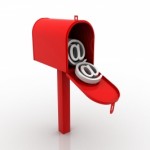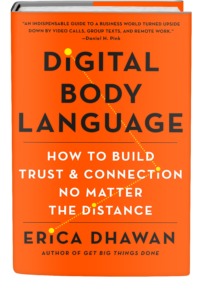
Image courtesy of renjith krishnan / FreeDigitalPhotos.net
I’ve had some success meeting amazing people via e-mail—without having a connection or an introduction, just cold e-mailing. A lot of the things I’ve accomplished as an entrepreneur—getting published in leading business magazines, getting jobs, and growing my own business—came from cold e-mails.
Here's how to make your unsolicited e-mail stand out in a crowded inbox:
1. Write the e-mail with the reader in mind. Put yourself in their shoes. What is it they want to know when they read the e-mail? Who is this person? Why is it important that they read this e-mail? What action should they take after they read it? Be clear, be persuasive and, most important, be relevant.
If you're looking for a business opportunity, write something like, “My name is XX. I am an entrepreneur at XX with a revenue opportunity for you. Can I set up 10 minutes with you in the next week?”
If you're just looking for information for something you're working on, be clear about any benefits. Try to write something like, “My name is XX. I study at UPenn and wanted to chat on a topic I’m researching. Would you be able to chat for 15 minutes or answer a few questions by e-mail? I'd be happy to cite you as a resource.”
2. Make sure you ask the question you want to ask. Sometimes we make the mistake of saying, “Let me know if you have time.” That’s not a question, and it’s neither direct nor clear. If you don’t make it important to you, they don’t make it important to them. Instead, write something like, "Can we meet for 15 minutes over coffee in the next two weeks?"
3. Be specific and direct about who you are and what you offer. Don’t give a three-sentence bio. Give a one-sentence, results-focused description about what you have to offer. Also, cater it to the person you're e-mailing; it might not be a one-size-fits-all pitch.
4. Avoid starting your e-mail with “How are you?” Everyone does it and it doesn’t mean anything, particularly if you're sending a cold e-mail. Nine times out of ten, the bottom of your e-mail contains a specific request, and you never actually had any interest in the e-mail recipient's well-being. People are busy—start your e-mail with a brief sentence outlining who you are and why you're writing. Save the niceties for when you meet or exchange more messages.
5. Ask how you can help them, or offer something in return. People are always looking for free goodies. It could be as easy as a LinkedIn testimonial, a tweet, a blog post, some time to chat about their idea, an introduction or a few hours of work on their proposal. Whatever it is, find a way you can support the person in exchange for their time and attention, particularly as a young entrepreneur reaching out to someone more experienced and successful.
Remember, we live in a new economy of collaboration—and that means it’s more important than ever to find ways to help one another before asking for favors in return. For Millennial entrepreneurs and job seekers, nothing is more valuable than time—both your e-mail recipients' time, and your own.
This first appeared at AMEX Open Forum.

Speak Your Mind